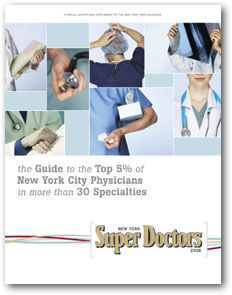 The New York Times interviewed Dr. Bernstein for a full-length article on hair loss and hair transplant options for women interested in hair restoration. The article – titled, “Tricks and Transplants for Women’s Hair Loss” – covered modern hair transplantation techniques, hair transplant costs, camouflage techniques, and more.
The New York Times interviewed Dr. Bernstein for a full-length article on hair loss and hair transplant options for women interested in hair restoration. The article – titled, “Tricks and Transplants for Women’s Hair Loss” – covered modern hair transplantation techniques, hair transplant costs, camouflage techniques, and more.
Read below for some excerpts of the article:
Exploring Your Options:
Hairstylists, impressed with how realistic the “new” transplanted hair looks, recommend doctors to clients who are tired of hiding their hair loss with layers or high- and lowlights. “I’ve seen bad jobs,” said Seiji Kitazato, the creative director at Frédéric Fekkai on Fifth Avenue, who refers clients to a few surgeons. “But now you can’t even tell.”
Still, not every woman of the millions who suffer from hair loss is a candidate. Underlying conditions, including anemia and thyroid problems, that are temporary, treatable or affect the scalp rather than the hair, must be dealt with before a transplant can be considered. If a transplant is ruled out, sufferers must rely on wigs, hairpieces or styling tricks.
What’s more, “most medications can cause hair loss, some more frequently than others,” said Dr. Robert M. Bernstein, a clinical professor of dermatology at Columbia University who has a restoration center in Manhattan.
A transplant is an option only for a woman who has a thick enough area of hair from the back and sides to “donate” to a more paltry part of her scalp. But many women don’t experience this kind of localized balding; instead their entire head of hair thins out during menopause or as they age.
Buyer Beware:
So the incentive to treat any and all comers is high. “It’s a big problem,” Dr. Bernstein said. “You shouldn’t go to someone who will give a transplant to anyone who walks in the door.” If your condition is not properly assessed, you could permanently shed more hair after surgery than you gained, he warned, or if the hair transplanted wasn’t stable, “it would disappear.”
Before Hair Transplant Surgery:
If you’re suffering hair loss, see a dermatologist first, not hair transplant surgeons, said Dr. Robert M. Bernstein, a dermatologist in Manhattan who specializes in hair restoration. After determining a cause, dermatologists can offer advice about options from the medical to the surgical. Many women with hair loss try Women’s Rogaine, a solution with 2 percent minoxidil that is applied to the scalp, twice daily. Others prefer Rogaine’s foam for men, because it has 5 percent minodixil, dries quickly and feels less greasy. (But even the women’s formulation warns to discontinue use if facial-hair growth occurs.)
Posted by Robert M. Bernstein M.D. ![]() The Super Doctors 2013 list, which appears in New York Times Magazine, has included Dr. Bernstein for the second year in a row. The list, published by Key Professional Media as a special insert in the magazine, ranks Dr. Bernstein as one of New York City’s best dermatologists.
The Super Doctors 2013 list, which appears in New York Times Magazine, has included Dr. Bernstein for the second year in a row. The list, published by Key Professional Media as a special insert in the magazine, ranks Dr. Bernstein as one of New York City’s best dermatologists.

 Dr. Bernstein has been nominated by his colleagues as one of the
Dr. Bernstein has been nominated by his colleagues as one of the  The New York Times, once again, has recognized Dr. Bernstein’s pioneering hair restoration techniques. The NYT Fashion and Style section noted that he is, “the first hair transplant surgeon on the east coast,” to use the ARTAS robotic system for Follicular Unit Extraction.
The New York Times, once again, has recognized Dr. Bernstein’s pioneering hair restoration techniques. The NYT Fashion and Style section noted that he is, “the first hair transplant surgeon on the east coast,” to use the ARTAS robotic system for Follicular Unit Extraction.  Dr. Angela Christiano, a colleague of Dr. Bernstein’s at Columbia University, has been studying the causes of alopecia areata and genetic hair loss for many years. She, in fact, suffers from the disease as well.
Dr. Angela Christiano, a colleague of Dr. Bernstein’s at Columbia University, has been studying the causes of alopecia areata and genetic hair loss for many years. She, in fact, suffers from the disease as well.



